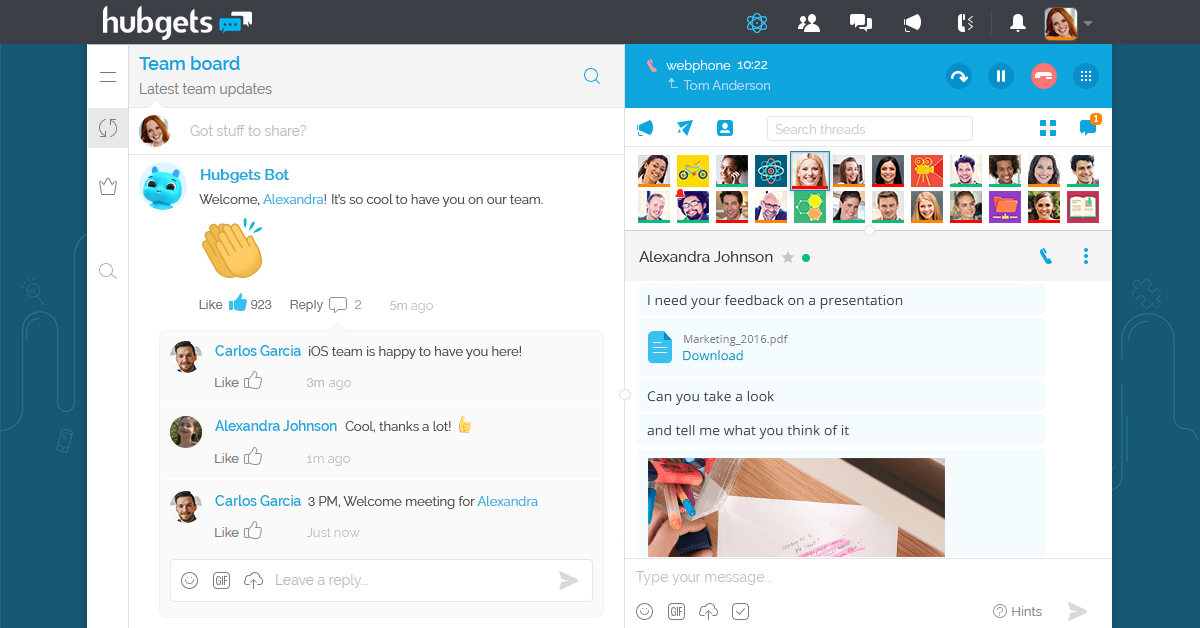Suddenly a good portion of the workforce finds itself working remote. If you’re an HR professional or manager who had new hires lined up pre-pandemic, you might be wondering how to onboard remotely. When you’re already dealing with an experimental distributed workplace, bringing on a new team member might seem at best, daunting, and, at worst, a nightmare.

There are many ways to virtually onboard new employees so they can successfully integrate into your team. Use these tips to bring your new employees on while streamlining the process for future hires.
Be transparent
Everyone has a lot to worry about given our current climate. Not to mention, going into a new company and role is already anxiety-inducing in the best of circumstances. One way to help new workers assimilate is by being honest and transparent about the current situation. The Neuroleadership Institute explains via research and studies that transparent leadership improves employee experience.
If you’re creating a virtual onboarding program from scratch, explain this to new employees and ask them to have patience as you work out the kinks. In addition, if the team is a little discombobulated from making the switch to remote, be upfront about it so the new hire understands that it’s not the norm.
Being candid can help the new person transition and also potentially prevent their turnover. What’s more, the notion of everyone going through this evolution together could be a bonding experience for all team members, current and new.
Plan a virtual welcome party
Don’t discount the power of a warm welcome. Just because you can’t go out to lunch or hit a happy hour doesn’t mean you can’t have a virtual gathering as part of your onboarding process. Plan a digital get together and make sure that most of the team can attend. Consider involving an activity to make it more laid back and less like a traditional meeting. For example, you could ask everyone to bring coffee or tea or have a late afternoon cocktail.
Or you can do it like we do it 😉 New hires are always welcomed on our Hubgets Team Board by our mascot bot, HUG, so that everyone can greet them. Furthermore, they can be invited to join specific Topics, depending on the project they are assigned to. This way, new team members can instantly access the project communication and absorb the information independently.

Both these approaches are great ways to introduce the team in a low-pressure setting so new hires can get to know everyone and put faces to names.
Develop a digital handbook
When people are nervous about their first day, they may not be able to retain information as well as they normally can. Research shows that stress impairs memory retrieval and cognitive ability. Create a digital handbook that new hires can refer back to with key company information. This can be as simple a long-form document.
Beyond the standard handbook items (HR policies, code of conduct etc.), include points that will help solidify their understanding of the overall organization, such as:
- Mission: The mission and values of the organization. Try to connect the how and why: why the company is aspiring to that mission and how their role fits in.
- Culture: Describe the standard workplace culture pre-pandemic so the new person can get a sense of the ideal ecosystem. Remember, culture is hard to nail down via a remote environment, so even anecdotes about the typical environment can be helpful, in addition to content about the current remote culture.
- Communication guidelines: Remote work can make communication ambiguous. You can’t pop into an office or chat at the watercooler. Eliminate any uncertainty about how employees should communicate by outlining which scenarios require an email versus a call, or what to do with an urgent matter.
Connect new hires to the team ASAP
According to the 2019 State of Remote Work report, the second most prevalent problem teleworkers experience is loneliness. Combine that with the fact that new hires weren’t given the luxury of meeting and working with their team in-office before it shut down, and you have a high potential for isolation. To avoid this, connect your new staff with the team as soon as possible. Not just for your welcome lunch but integrate them into the workflow, even if it’s just as a bystander at first.
Collaborating with colleagues can also give freshman staff a better sense of processes and culture, more so than an individual HR representative or handbook can.
To streamline training even further, after connecting your new employee with the current team, assign them a point person. This might be you, as the onboarding staff or manager. Alternatively, it could be a peer on their team. Just make sure they know who they can go to with quick questions or informal communication.
Transition training sessions to live demos
When it comes to training for specific tasks, don’t disseminate a one-size-fits-all tutorial video for new employees. Instead, have your experienced employees host live training demos via video conferencing. If you’re onboarding more than one person in similar roles, you can schedule a multi-person demo where the trainer does a live screen share and talks them through a process.
Then ask the trainee to go through a task or project with the trainer on the call. Watching someone is helpful, but some points don’t sink in until you do it yourself. Having a colleague available to ask questions while you give it a go can cement a new concept or procedure in place.
Streamline the process by also having the training demos recorded and added to your knowledge center. This way, new hires can always refer back to the demo if they need a refresher.
Practice a policy of always updating
If this is the first time onboarding a remote employee, remember that it’s an iterative process. You’ll likely be doing it several times, and you can improve along the way. You’ll need to work out the kinks, there’s no getting around it. So ask for feedback from your new team members as they onboard.
To double up on your efficiency, not only will you train a new employee, but their experience can train you on how to optimize remote onboarding in the process.
1 Comment
You can post comments in this post.
We all are working from home due to Covid-19. Yes, adding new members and explain the process of work is a stressful process. This piece of article is helpful.
Sarah 5 years ago
Post A Reply